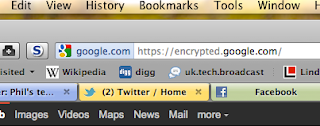This is a scenario made popular by the American game-show "Let's make a deal"; The host, the eponymous Monty shows the contestant three doors and tells them there is a car behind one of the doors and booby prizes (typically goats) behind the other two. The contestant gets to choose a door and then Monty opens one of the doors they didn't choose showing them a goat. He then offers them the chance to change their mind. Initially most people say something like "..it's fifty-fifty, so no, I won't change" - but it's not 50/50, changing your mind at this point doubles your chance of getting the car.

Possibly because I did a year of Game Theory on my degree the first thought I had when I initially heard this problem was "where are the odds invested?". When you pick your first door your odds are a third. However - two-thirds odds are invested behind the other two doors and when Monty shows you which of those doors has a goat you know that none of the odds are now behind the door he just showed you; the car can't be behind that door (Monty showed you the goat). Your original door still has a third of the odds and so now the final door MUST carry the two-thirds odds that you didn't choose initially. Changing your mind now doubles your odds.
It's not a straight fifty-fifty because Monty introduced some new information half-way through the game. He showed you which of the two-thirds doors don't have the car.
The Wikipedia article is very good - I nicked the picture from there.
The problem is interesting because it shows how little innate understanding of game theory (and statistics, and probability) most people have. You gotta trust the maths, not your instincts.



